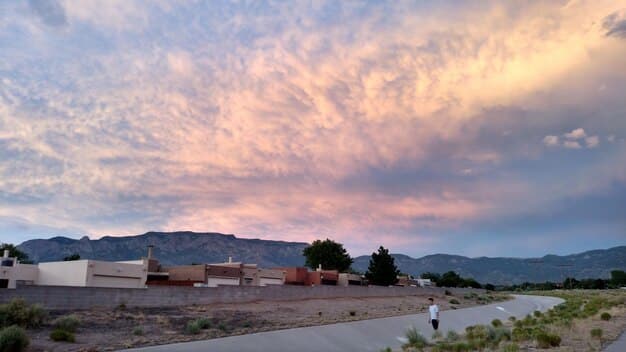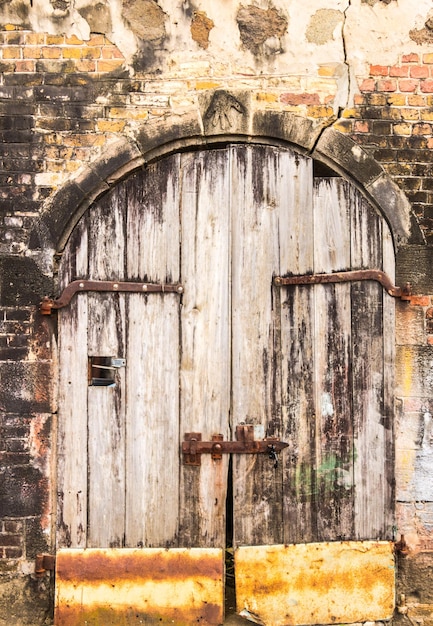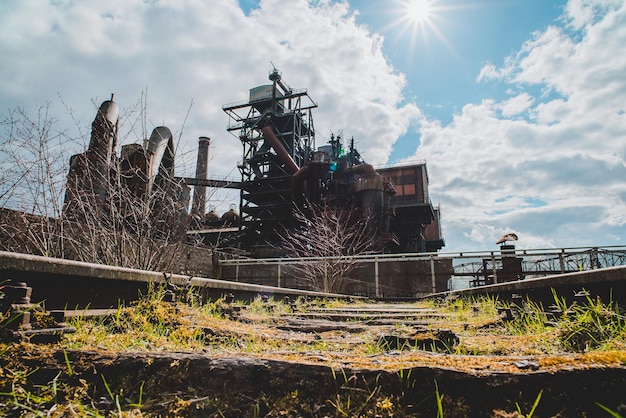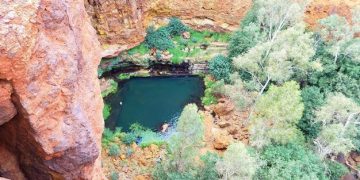Exploring America’s Ghost Towns: A 2025 Travel Guide

America’s ghost towns offer a unique glimpse into the past, representing abandoned settlements that once thrived but now stand as silent reminders of bygone eras, making them fascinating destinations for history buffs and adventurous travelers alike in 2025.
Embark on a captivating journey through the forgotten corners of the United States with a guide to America’s ghost towns in 2025. These spectral settlements, remnants of different eras and industries, offer a unique window into the nation’s past, inviting exploration and reflection.
Discovering America’s Ghost Towns: A 2025 Overview
America’s ghost towns are more than just historical sites; they are time capsules that offer insights into the economic, social, and environmental factors that shaped the nation. Exploring these abandoned settlements in 2025 allows us to connect with the past in a tangible way, understanding the resilience and the impermanence of communities.
From mining boomtowns in the West to agricultural settlements in the Midwest, each ghost town has its own story to tell. These stories are etched into the decaying buildings, the overgrown streets, and the surrounding landscapes.
The Allure of Ghost Towns
What makes ghost towns so compelling? It’s a combination of historical intrigue, the mystery of abandonment, and the stark beauty of decay. They offer a sense of adventure and a chance to step back in time.
- The historical significance: Ghost towns are often remnants of significant periods in American history, such as the gold rush, the expansion of railroads, or agricultural booms.
- The mystery of abandonment: Understanding why a town was abandoned can be as intriguing as exploring the ruins themselves. Was it a natural disaster, economic downturn, or a shift in population?
- The stark beauty of decay: Nature reclaims these settlements, creating a unique aesthetic that is both haunting and beautiful.
Exploring these sites also raises questions about sustainability, community, and the impact of human activity on the environment. They serve as stark reminders of the cyclical nature of prosperity and decline.

Planning Your Ghost Town Adventure in 2025
Visiting a ghost town requires careful planning to ensure a safe and respectful experience. Many of these sites are remote, lack amenities, and may have hazards such as unstable structures or wildlife. The journey to America’s ghost towns in 2025 demands consideration for safety and preservation.
Before setting out, research the specific ghost town you plan to visit. Understand its history, current condition, and any regulations or restrictions that may be in place.
Essential Preparations for Your Trip
Proper preparation is crucial for a successful and safe ghost town adventure. This includes packing the right gear, understanding local conditions, and being aware of potential hazards.
- Gear and supplies: Pack sturdy footwear, appropriate clothing for the weather, plenty of water, snacks, a first-aid kit, and a map and compass (or GPS).
- Safety considerations: Be aware of potential hazards such as unstable buildings, old mines, and wildlife. Avoid entering buildings that appear unsafe and stay on marked trails.
- Respect and preservation: Treat these sites with respect. Avoid disturbing or removing any artifacts, and leave no trace of your visit.
- Legal Restrictions: Some ghost towns are privately owned, and trespassing is illegal. Always check ownership and access rights before planning your visit.
Remember that these are fragile historical sites and should be treated with care. Your actions can help preserve them for future generations.
Iconic Ghost Towns to Explore
Several ghost towns across America stand out as particularly compelling destinations. These sites offer a blend of historical significance, well-preserved structures, and stunning landscapes. Here we explore some iconic and must-see ghost towns.
From the Wild West to the East Coast, these settlements represent a diverse range of industries and historical periods. Each town provides a unique glimpse into the past, inviting exploration and reflection.
Bodie, California
Bodie is one of the best-preserved ghost towns in the United States. Once a bustling gold-mining town, it was abandoned in the early 20th century. The town is now a State Historic Park, with many buildings still standing, complete with furniture and belongings.
Cahawba, Alabama
Cahawba served as Alabama’s first permanent state capital from 1820 to 1825. Today, it is an abandoned town that once held significance as a Confederate prison. Visitors explore the historical remnants, including streets, building foundations, and cemetery plots that share Cahawba’s rise, fall, and eventual desertion throughout the 19th century.
Thurmond, West Virginia
Thurmond, West Virginia once was a thriving coal-mining town. As the popularity of coal waned, Thurmond decreased in a big way.
- Location and accessibility: Bodie is located in the Sierra Nevada Mountains and is accessible by car. Plan to arrive early for a parking space, as the small lot fills up quickly.
- Historical highlights: Explore the Main Street, visit the church, and peek into the windows of the abandoned homes and businesses. A museum offers insights into the town’s history.
- Preservation efforts: The park service works to preserve Bodie in a state of “arrested decay,” maintaining its authentic appearance while preventing further deterioration.
Each of these ghost towns offers a unique experience, providing a tangible connection to the past and a chance to understand the challenges and triumphs of early American settlers.
The Legacy of Mining Towns
Many ghost towns owe their existence to the boom-and-bust cycles of the mining industry. These towns sprang up overnight with the discovery of valuable minerals, only to be abandoned when the resources were depleted. This is the case with many iconic ghost towns across the United States.
Mining towns offer a unique perspective on the economic and social forces that shaped the American West. They represent a time of rapid growth, innovation, and often, environmental exploitation.
The Boom-and-Bust Cycle
The rise and fall of mining towns followed a predictable pattern. The discovery of gold, silver, or other minerals would trigger a rush of prospectors, merchants, and entrepreneurs. Towns would grow rapidly, with saloons, stores, and homes springing up to meet the needs of the burgeoning population.
However, once the mines were exhausted, the population would dwindle, businesses would close, and the town would gradually fade away. The remnants of these boomtowns now stand as silent reminders of the fleeting nature of wealth and prosperity.

Exploring these ghost towns offers a chance to reflect on the environmental impact of mining and the importance of sustainable resource management. They also highlight the resilience of communities and their ability to adapt to changing economic conditions.
Agricultural Abandonment and Rural Decline
Not all ghost towns are the result of mining booms. Many agricultural settlements have been abandoned due to changing farming practices, economic pressures, and shifts in population. Explore the changes in agricultural practices and the decline of smaller rural towns.
These ghost towns offer a different perspective on American history, highlighting the challenges faced by rural communities and the impact of industrialization on agriculture.
Factors Contributing to Rural Decline
Several factors have contributed to the decline of agricultural settlements. These include:
- Changing farming practices: The introduction of mechanized farming equipment and large-scale agricultural operations has made it difficult for small family farms to compete.
- Economic pressures: Fluctuations in commodity prices, rising costs of inputs, and increasing competition from global markets have put immense pressure on farmers.
- Population shifts: As job opportunities have shifted to urban areas, many rural residents have moved away, leaving behind aging populations and declining communities.
Visiting these ghost towns offers a chance to understand the challenges faced by rural communities and the importance of supporting sustainable agriculture and local food systems.
Preserving Ghost Towns for Future Generations
Preserving ghost towns is essential for maintaining a tangible connection to the past. These sites are not just historical relics; they are valuable educational resources and unique tourist destinations. Discuss the importance of preserving these historical sites and the challenges involved.
Preservation efforts require a balance between protecting these sites from further deterioration and allowing visitors to experience their unique atmosphere.
Challenges of Preservation
Preserving ghost towns can be challenging due to:
- Limited funding: Many ghost towns are located in remote areas with limited resources, making it difficult to secure funding for preservation efforts.
- Environmental factors: Weather, erosion, and vandalism can all contribute to the deterioration of these sites.
- Conflicting interests: Balancing preservation with tourism and economic development can be difficult, as these interests may not always align.
Despite these challenges, many organizations and individuals are working to protect and preserve ghost towns for future generations. This can involve stabilizing buildings, restoring historical features, and developing educational programs to promote awareness and appreciation.
| Key Point | Brief Description |
|---|---|
| 🗺️ Exploration | Ghost towns offer a unique way to explore America’s past. |
| ⛏️ Mining Towns | These towns tell tales of booms and busts in the mining industry. |
| 🌾 Rural Decline | Agricultural settlements declined due to economic and population shifts. |
| 🏛️ Preservation | Preserving these sites helps maintain connections to the past. |
FAQ Section
A ghost town is typically defined as a settlement that was once inhabited but has since been abandoned, often due to economic decline or environmental disasters. The key is the lack of a substantial permanent population.
Safety varies. Some ghost towns are well-preserved and managed, while others are in disrepair. Visitors should be aware of potential hazards such as unstable structures, old mines, and wildlife, and heed posted warnings.
In most cases, no. Many ghost towns are protected historical sites, and removing artifacts is illegal. Even if it isn’t illegal, it’s generally considered unethical, as it deprives others of the experience and can damage the site.
Essentials include sturdy footwear, appropriate clothing, plenty of water, snacks, a first-aid kit, and a map or GPS. A camera is also a great idea to capture the unique atmosphere.
Local historical societies, libraries, and online forums dedicated to ghost towns often have information on lesser-known sites. Researching historical maps and documents can also uncover forgotten settlements.
Conclusion
Exploring America’s ghost towns in 2025 offers a unique opportunity to step back in time and connect with the nation’s past. Whether you’re drawn to the rugged landscapes of the West or the forgotten settlements of the East, these spectral communities offer a glimpse into the economic, social, and environmental forces that shaped America’s history. With careful planning and a sense of respect, these journeys can be both educational and deeply rewarding.





